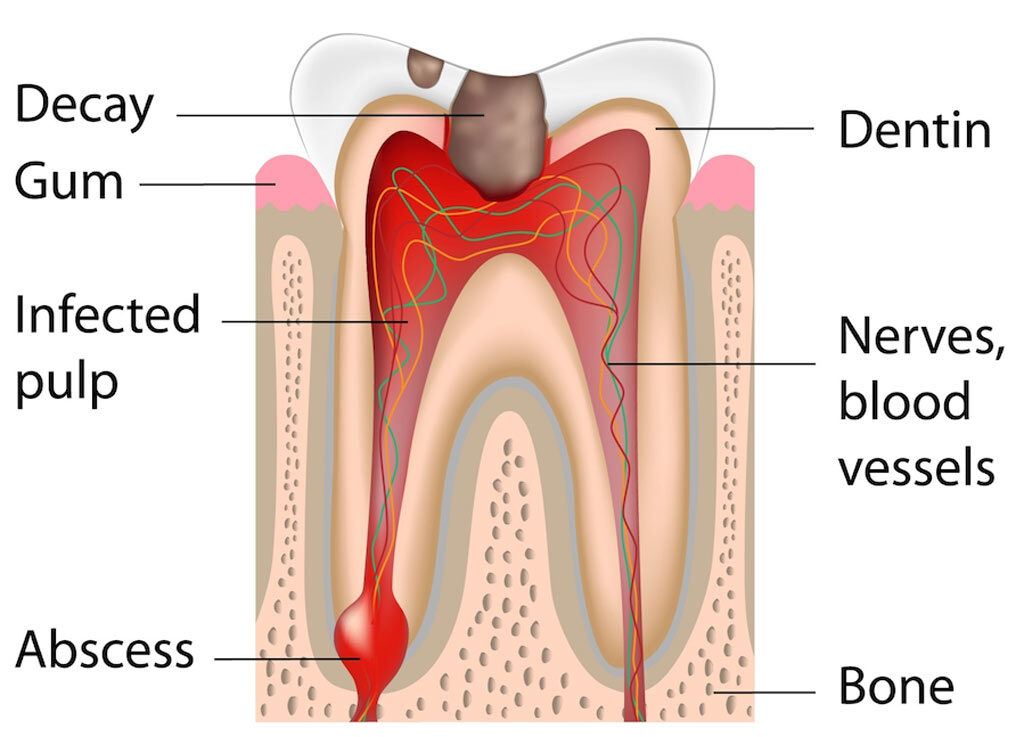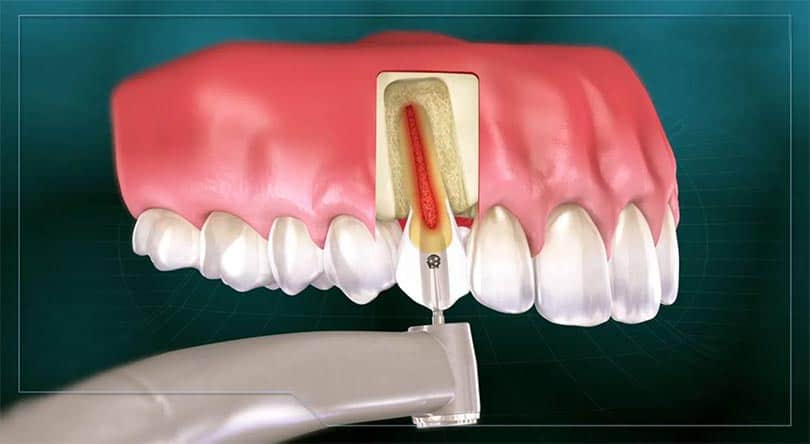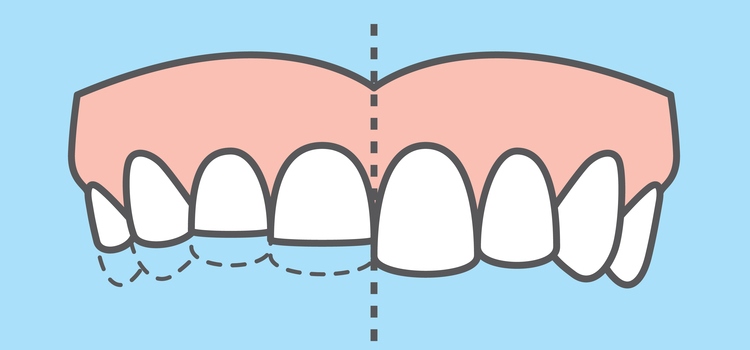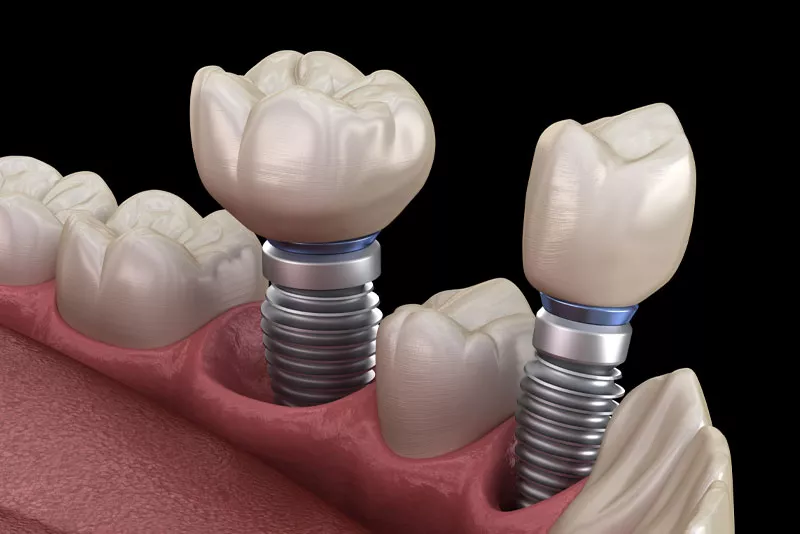A picture-perfect smile is something many of us aspire to achieve. In particular, many of us take special care of our front teeth as they are the ones visible to others.
However, our front teeth, also known as an anterior tooth, can sometimes experience issues that require prompt attention. One such dental procedure that comes to the rescue is root canal treatment for front teeth. The need for a root canal can be particularly concerning for many people due to the visibility of the tooth.
However, understanding what a root canal entails and why it may be necessary can help alleviate any anxiety you may have about the procedure. In the rest of the article, we will explore what a root canal for a front tooth involves, and what you should expect for the procedure.
Whether you have been told you need a root canal for your front tooth or are simply curious about how it works, this article will surely provide you with all the information you need to make an informed decision.
What Is a Root Canal?
A root canal is a dental procedure designed to treat a damaged or infected tooth. The term “root canal” refers to the cavity found within the tooth’s center, which contains the dental pulp. The dental pulp is a mass consisting of nerves, blood vessels, and connective tissue; together, it nourishes and supports the tooth.
When the dental pulp becomes inflamed or infected due to decay, trauma, or a crack in the tooth, a root canal procedure will be necessary. A root canal can alleviate pain and prevent the spread of infection, saving the natural tooth and allowing it to function as normal.
A typical root canal procedure consist of the following steps:
- Diagnosis: Your endodontist will first examine the infected tooth to determine the extent of the infection or damage. A dental X-ray is then taken to assess the tooth’s overall condition.This will determine if a root canal treatment is the most appropriate treatment.
- Anesthesia: During the root canal procedure, local anesthesia is applied to numb the area around the affected tooth. This eliminates any pain that the patient may feel during the procedure.
- Access hole: A small hole is drilled into the tooth to access the infected pulp chamber and root canals.
- Pulp removal: Using specialized endodontic files, the endodontist access the dental pulp and removes the infected or damaged pulp tissue from the root canals.
- Cleaning and shaping: The canals are thoroughly cleaned and shaped using endodontic files. A disinfecting solution is then applied to eliminate bacteria and debris.
- Filling: The cleaned and shaped root canals are filled with a biocompatible material to seal the canals and prevent any further infection.
- Sealing: A temporary filling is placed to seal the access hole. In most cases, a permanent restoration such as a dental crown will be placed at a later appointment to protect and strengthen the tooth.
- Follow-up: A follow-up appointment is scheduled weeks after the root canal procedure to monitor the healing process and place a permanent restoration if necessary.
You may be interested in: Can a Wisdom Teeth Fall Out Naturally On Its Own?
While root canals are often associated with pain and discomfort, advances in dental technology and anesthesia have made the procedure much more comfortable and less invasive than in the past. Most patients report feeling little to no pain during the procedure and have experienced a significant reduction in pain and discomfort once the damaged or infected pulp has been removed.
Can a Root Canal Be Done on a Front Tooth?
The answer is yes, a root canal procedure can be done on a front tooth. In fact, performing of root canal on a root canal is becoming increasingly common among patients.
A root canal treatment on a front tooth are usually less complex than those on the molars (e.g wisdom tooth), as a front tooth have only one root canal. In contrast, the molars can have multiple root canals, complicating the surgical procedure.

It is important to note that while a root canal treatment can effectively save a damaged or infected front tooth, a dental crown or other similar restoration procedures maybe needed to restore its aesthetic appearance. That said, your endodontist will take special care to minimize the impact on the tooth’s appearance. This includes the drilling of the access hole on the backside of the front tooth, and application of a tooth-colored composite resin to restore the appearance.
The prognosis for root canal-treated front teeth is generally favorable, and the success rate is higher than molars that have undergone a root canal.. With proper dental care, including good oral hygiene and regular dental checkups, a root canal-treated front tooth can remain functional and maintain its appearance for many years.
How Long Does Root Canal on a Front Tooth Take?
The duration of a root canal treatment on a front tooth can vary depending on several factors, such as the complexity of the tooth’s root canal system, the presence of infection or inflammation, and the expertise of the endodontist performing the procedure.
Generally, a root canal treatment on a front tooth can take anywhere between 45 minutes to 2 hours in a single appointment.
As mentioned previously, the froont teeth have only one root canal, making the treatment less complicated compared to molars that have multiple canals. This meant that root canal for front tooth usually have a shorter treatment time.
Note that the time required for a root canal treatment should not be the primary concern, as the main goal is to thoroughly clean, shape, and seal the tooth to prevent future infections and ensure its long-term health and function.
How Much Does a Root Canal on a Front Tooth Cost?
The cost of a root canal on a front tooth can vary depending on several factors, such as the dental professional’s experience, the complexity of the procedure, and the geographical location where the treatment is being performed.
In the United States, the average cost of a root canal treatment for a front tooth ranges from $300 to $1,500. Premolars and molars cost higher due to the size and number of roots that the tooth has. This cost is for the root canal treatment alone and does not include the fees for the dental restoration that may be needed afterward, such as a dental crown, veneer, or filling. The restoration can cost an additional $100 to $1,000, depending on the material and complexity of the restoration.
You may be interested in: Can You Brush Your Teeth After a Root Canal?
Dental insurance can significantly reduce the out-of-pocket cost of a root canal treatment for a front tooth. Most insurance plans cover a portion of the procedure, typically 30% to 80%. You should always verify the coverage details with your insurance provider before undergoing a root canal treatment.
If you do not have dental insurance or if your insurance does not cover the full cost of the procedure, some dental clinics offer payment plans or financing options to help make the procedure more affordable for patients who are unable to pay the cost upfront.
It is essential to remember that while the cost of a root canal treatment might seem high initially, it is often more cost-effective in the long run compared to tooth extraction and replacement with a dental implant, bridge, or denture.
Takeaway
In conclusion, root canal treatment for front teeth is an essential and effective procedure that enables patients to preserve their natural teeth, maintain functionality, and retain a beautiful smile.
Understanding the factors that influence the cost and duration of a root canal on a front tooth can help patients make informed decisions about their oral health. Despite the initial cost, root canal therapy is often more cost-effective in the long run compared to tooth extraction and replacement with dental implants, bridges, or dentures.
By understanding what to expect during the procedure and following your dentist’s instructions for care, you can feel confident in your decision to undergo a root canal treatment for your front tooth!







